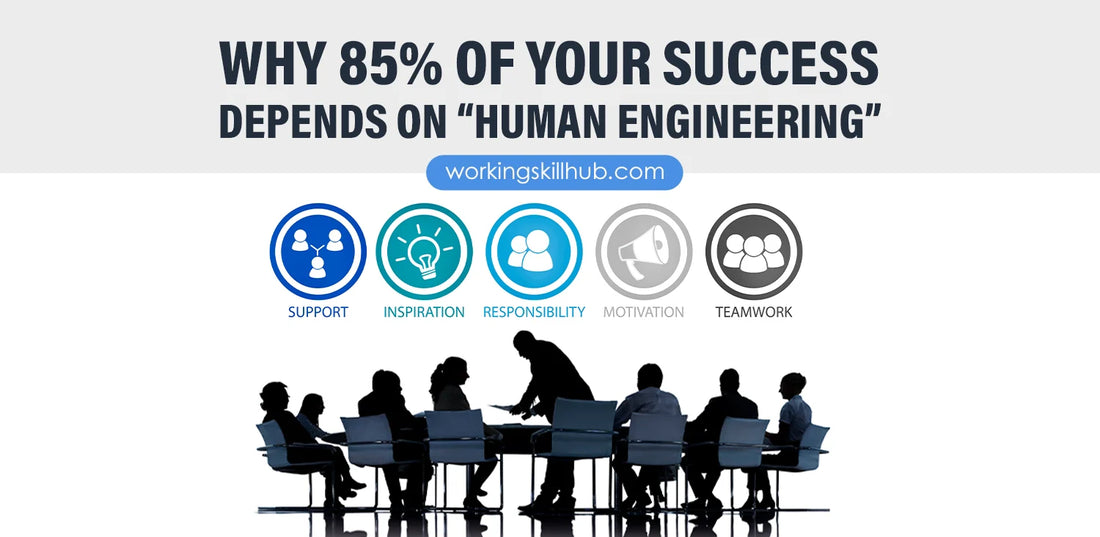Research from the Carnegie institutions showed a striking pattern: only about 15% of financial success is explained by technical knowledge. The remaining 85% is explained by personality, leadership, and communication — what early self-improvement pioneers called human engineering.
Translation: climbing the career ladder isn’t just about expertise. It’s about how you make others feel, how you lead, and how you move people to act.
What “human engineering” actually means
People who consistently win promotions, influence decisions, and build strong teams don’t necessarily have better degrees — they have better people skills.
At its core, human engineering is the deliberate practice of communicating and behaving in ways that make others trust you, follow you, and collaborate with you. It’s soft skills made strategic.
6 practical habits to build your human-engineering skillset
1) Own the first impression (80% nonverbal)
Before you say a word, people are already forming judgments. Improve your first impressions with:
-
Confident posture — stand/sit tall, head up.
-
Slow, genuine smile — more credible than a quick grin.
-
Strong eye contact — signals trust and confidence.
2) Put “You” first (WIIFY)
People respond when they feel seen. Always think: What’s In It For You (WIIFY)?
-
Use you-first language.
-
Frame asks in terms of their benefit.
-
Make them imagine the payoff.
3) Ask deeper questions
Go beyond facts. Ask about values, experiences, and motivations to create meaningful connection:
-
“What part of that project mattered most to you?”
-
“What would make this easier for your team?”
4) Listen to understand (not to reply)
Great communicators listen more than they speak. Show attention by:
-
Pausing before replying.
-
Reflecting back what you heard.
-
Asking clarifying questions.
5) Use “small smooth moves” consistently
Small habits compound. Practice daily micro-skills:
-
Short, sincere compliments.
-
Clear one-sentence goals in meetings.
-
A polite, tidy follow-up message.
6) Match persuasion to mindset
People think in three mindsets: Decision (practical), Emotional, Social (identity). Match your approach:
-
Use data and trade-offs for decisions.
-
Use stories and empathy for emotional moments.
-
Use shared language and norms for social/identity issues.


